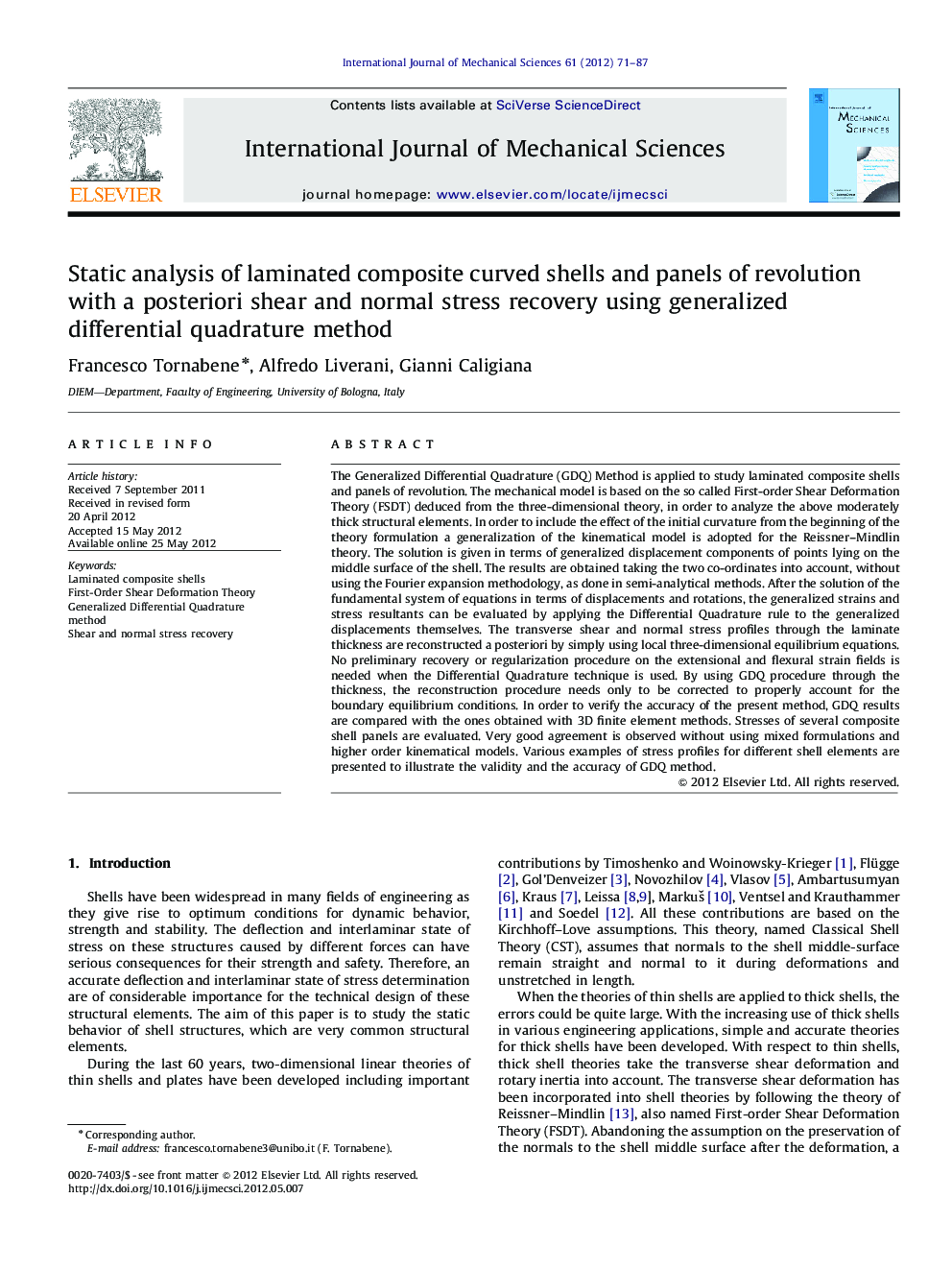| کد مقاله | کد نشریه | سال انتشار | مقاله انگلیسی | نسخه تمام متن |
|---|---|---|---|---|
| 780237 | 1465019 | 2012 | 17 صفحه PDF | دانلود رایگان |

The Generalized Differential Quadrature (GDQ) Method is applied to study laminated composite shells and panels of revolution. The mechanical model is based on the so called First-order Shear Deformation Theory (FSDT) deduced from the three-dimensional theory, in order to analyze the above moderately thick structural elements. In order to include the effect of the initial curvature from the beginning of the theory formulation a generalization of the kinematical model is adopted for the Reissner–Mindlin theory. The solution is given in terms of generalized displacement components of points lying on the middle surface of the shell. The results are obtained taking the two co-ordinates into account, without using the Fourier expansion methodology, as done in semi-analytical methods. After the solution of the fundamental system of equations in terms of displacements and rotations, the generalized strains and stress resultants can be evaluated by applying the Differential Quadrature rule to the generalized displacements themselves. The transverse shear and normal stress profiles through the laminate thickness are reconstructed a posteriori by simply using local three-dimensional equilibrium equations. No preliminary recovery or regularization procedure on the extensional and flexural strain fields is needed when the Differential Quadrature technique is used. By using GDQ procedure through the thickness, the reconstruction procedure needs only to be corrected to properly account for the boundary equilibrium conditions. In order to verify the accuracy of the present method, GDQ results are compared with the ones obtained with 3D finite element methods. Stresses of several composite shell panels are evaluated. Very good agreement is observed without using mixed formulations and higher order kinematical models. Various examples of stress profiles for different shell elements are presented to illustrate the validity and the accuracy of GDQ method.
► An a posteriori normal and shear stress recovery procedure for anisotropic shells.
► A stress recovery from 3-D elasticity equilibrium equations.
► An improvement of the RM Theory to consider the effect of the shell curvatures.
► Use of the GDQ method to solve the governing equations of motion.
Journal: International Journal of Mechanical Sciences - Volume 61, Issue 1, August 2012, Pages 71–87